Archives
Weekend Expedition 36: A trip to Victoria and the ESBC meeting
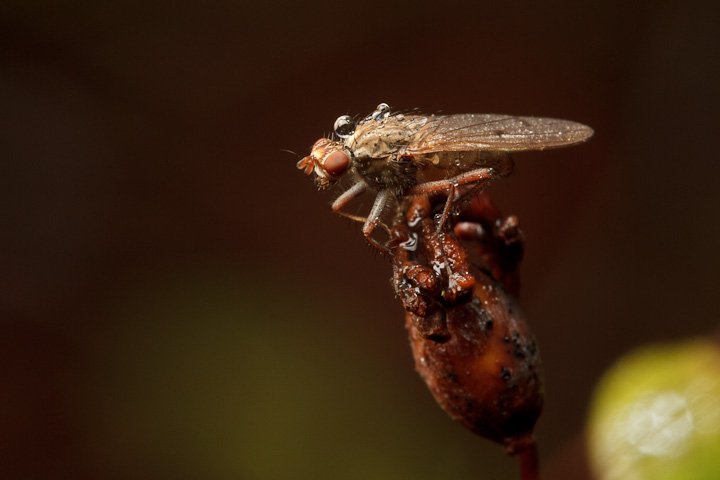
This weekend, we travelled to Victoria to attend the Entomological Society of BC annual meeting. This was pretty convenient, as this is my home town, just a short ferry ride away, and I could stay with my mom. On Friday, folks from my lab joined other (mostly student) presenters to give talks on our work. This was especially fun for me, as Richard Ring, my entomology professor from my undergrad days was in the audience, as was my mom! The talk I gave was a pared-down version of the one I did in Guelph, and it was a little rushed, with 3 major topics to cover. That being said, it was also quite well received.
I did not attend the honeybee symposium they held Saturday, as I had to do some final revisions to a manuscript, but we did end up having an extra morning on Sunday due to some ferry cancellations due to high winds. This was not such a bad thing, as it meant that we could have a Saturday night movie (we went to see “Gravity”), and I could get out in the morning to take some pictures!

Maggie the dog is the lucky beneficiary of our 3D glasses!

She looks thrilled.

Dawn at Gonzales Hill.

A pretty town.

Trial Island from Gonzales Hill.

Sylvan Lane, the pretty little lane leading up Gonzales Hill.

After Gonzales Hill, I took Maggie out to a foggy and mysterious looking Uplands Park for a walk.
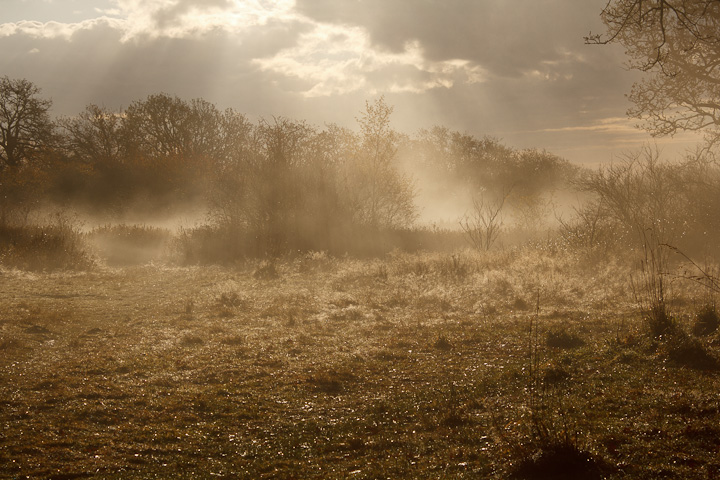

This fog was cold, and there was frost on the ground. Winter is here!

This cranefly was actually still alive, and I made to shoot it while I presumed Maggie was off eating rabbit poo (her hobby).

While I switched up to macro, trying to get a shot of the fly’s pretty eyes, I heard Maggie crunching something and thought to myself “Rabbit poo does not crunch!”

And indeed, rabbit poo does not crunch, but rabbit heads evidently do. She did not kill this, but she did find it, about 5 feet from where I was shooting!
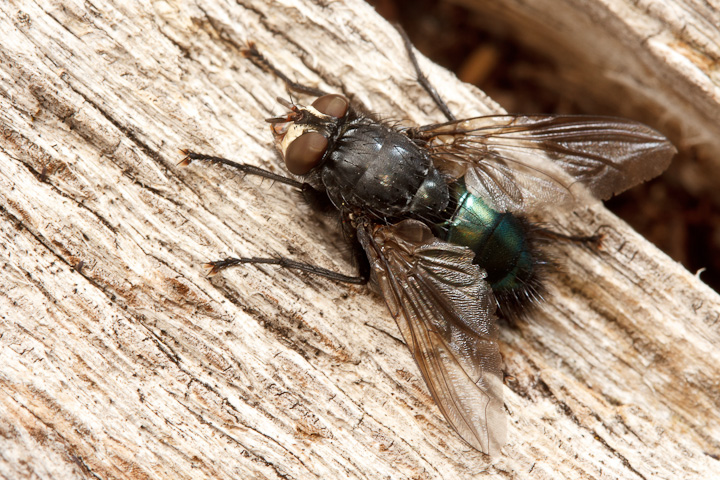
There was little out in the way of insects, but this large Cynomya cadaverina (Thanks Ben Coullter for the ID!) was soaking up the rays on a log.

Maggie was somewhat disappointed I took her head away…

On the way back, I did some wildlife spotting from the ferry. We were hoping to see thousands of dolphins, but we settled for a couple Dall’s porpoises and seals.

Weekend Expedition 35: A short trip to Lynn Canyon
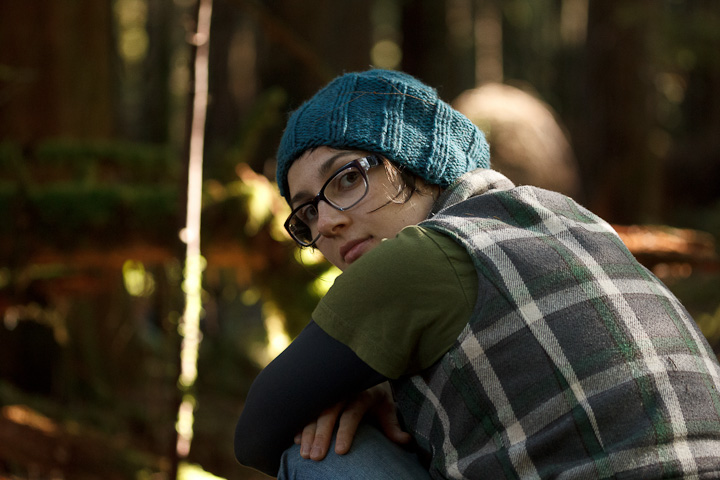
This Weekend Expedition was a bit rushed, as things were both busy and tiring for me, with the Spooktacular on Saturday, followed by a 5 h bout of Barn Owl tracking all night on Saturday-Sunday. As I slept in til nearly noon, and had a vehicle, I took Catherine out to Lynn Canyon, in her fabled homeland of North Vancouver. The place was absolutely crawling with people, as are most natural areas on the North Shore are on nice weekend days. A major infestation! For this reason, Catherine and I stuck to the woods high above the river.
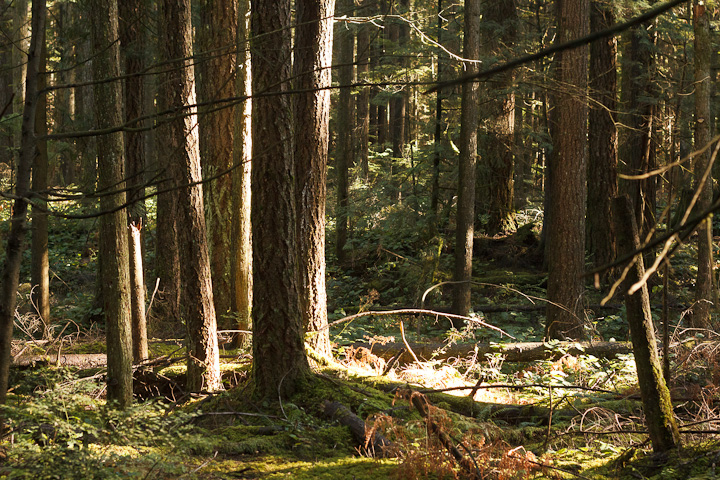
Although it was a nice dry, sunny day, the understory was still quite wet and teeming with fungal life,
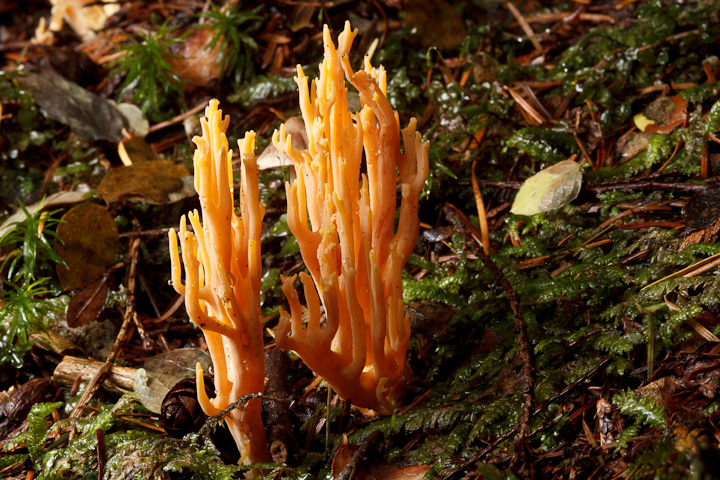
Fungi, such as this Ramaria added colour to the forest floor.

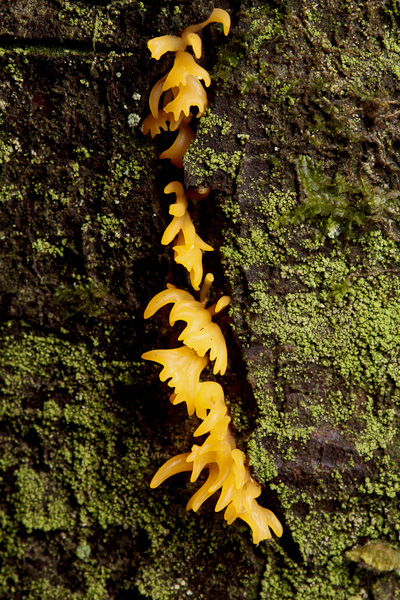
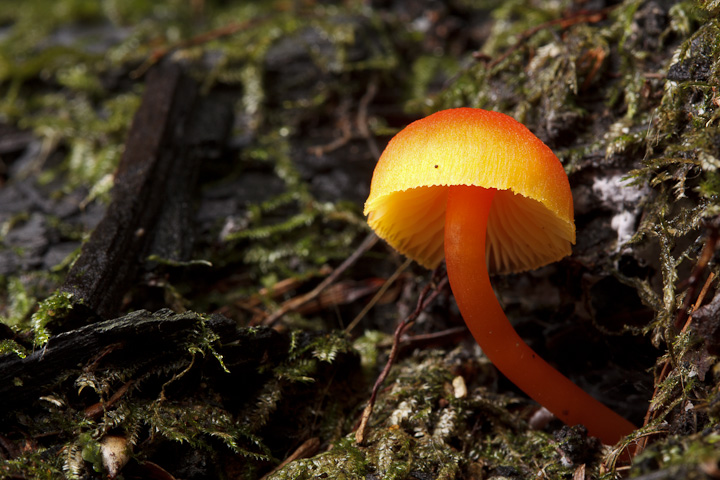
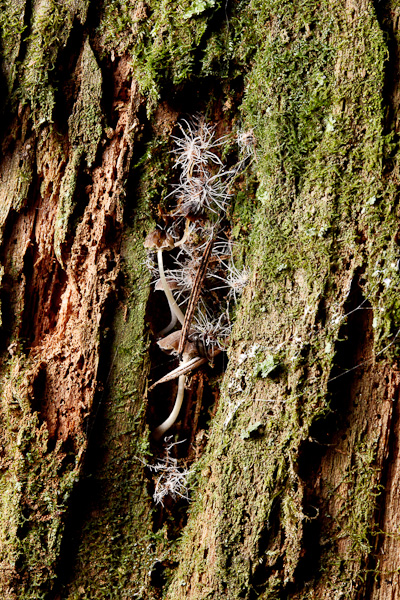
Even the crevices we examined for spiders seemed to be full of fungus.
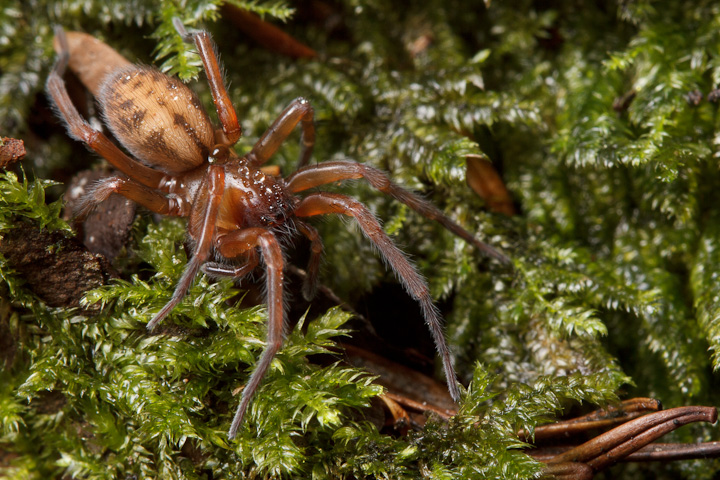
Most of the spiders we found were small Linyphiids or Araneids, but we did encounters some larger Amaurobiids, such as this pretty one. I really love the silky look of their abdomens.


We even found a Jumping Bristletail on an old cedar trunk.
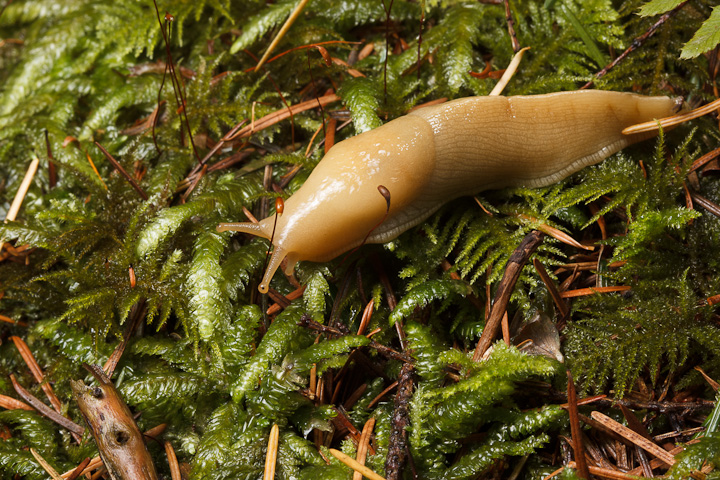
We say several large slugs, but not much else in the way of arthropods except for some stray, sunning Leptoglossus and fungus gnats.

Despite the crowds, getting out to the woods was good for us, as recently life has felt rather hectic.
Weekend Expedition 31: Sleeping Hymenoptera!

What is the perfect arthropod photographic subject? Cute jumping spiders, powerful robberflies, shiny tiger beetles? I would argue that all these are great, but they are not very easy to do full photographic justice to. No, what you need is something that stays still for long periods of time, at a handy angle for posing against the light, and is pretty to boot! Sleeping bees and wasps fit this bill perfectly! Many solitary bees and wasps perch with their mandibles locked into a plant substrate. making for some fine shooting opportunities. I was lucky enough to come upon two sleeping aggregations with Coelioxys bees and Ammophila wasps at Island View Beach on Friday morning. Because they were so still, I was able to try many kinds of shots with them, I hope you will enjoy seeing them as much as I loved taking them!

The colours of the dawn sky show from the east , while a diffused flash and a fill card light the subject. This is Coelioxys rufitarsus, one of the parasitic Megachilids. These beauties lay their eggs in other Megachilid nests, and their larvae consume their host’s provisions.



This Ammophila was shot using my standard lighting using the Monster Macro Rig.


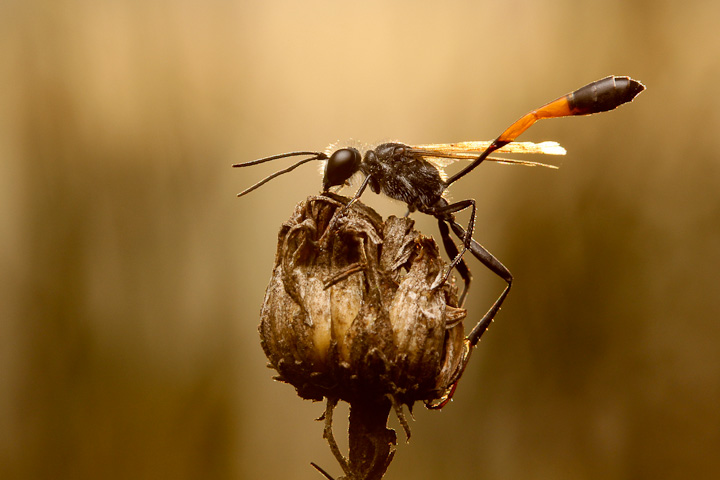

I love the elegant pointed abdomens of these awesome bees!
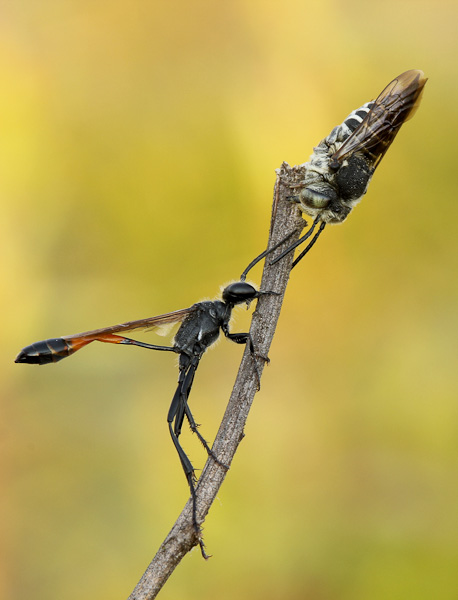
This shot of the two sleeping insects was shot from the tripod with all natural light, 1/8 sec, f13.
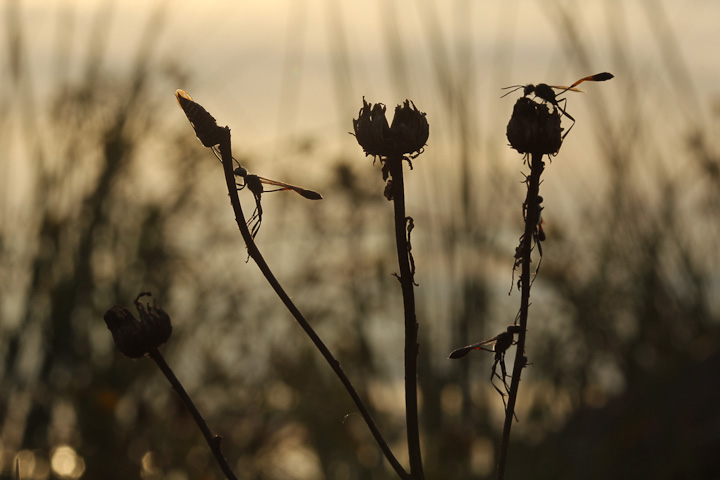
Tripod shot of the aggregation, silhouetting them against the dawn sky.
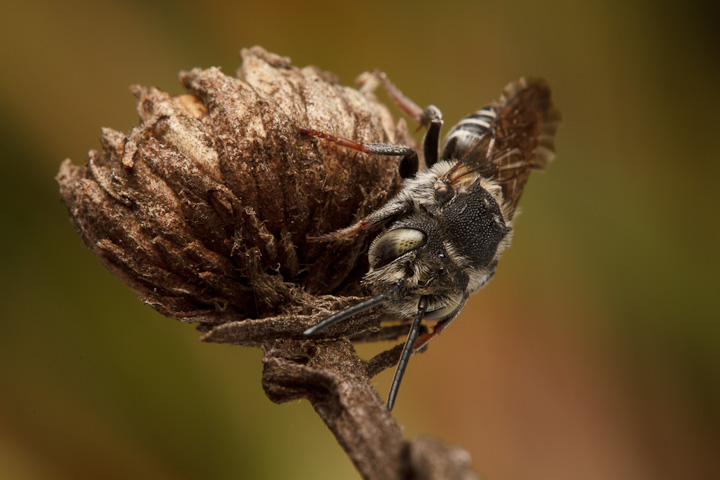
This shot shows the Coelioxys waking up.

When I have the time and a great subject, I like to compose some “cover shots”.

Of course I also shot them on white!


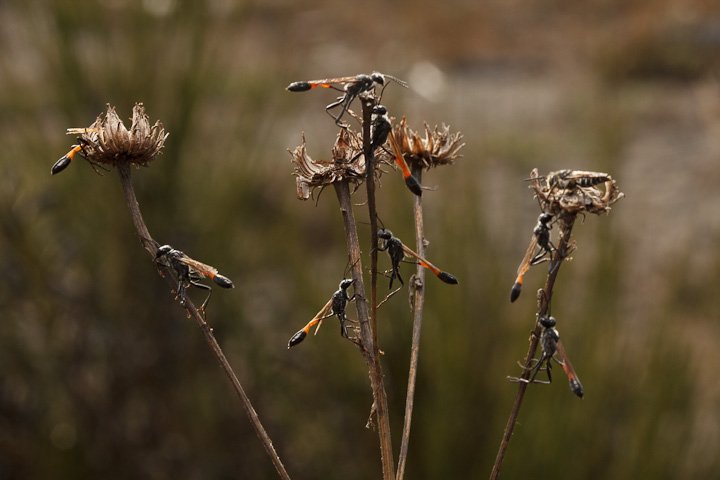
This is the second aggregation, a bit further up the beach.
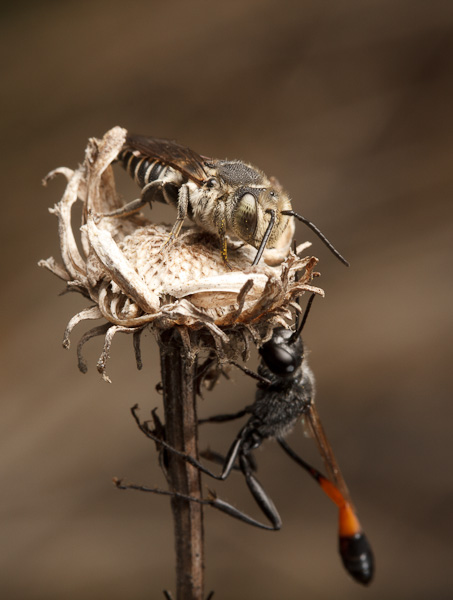
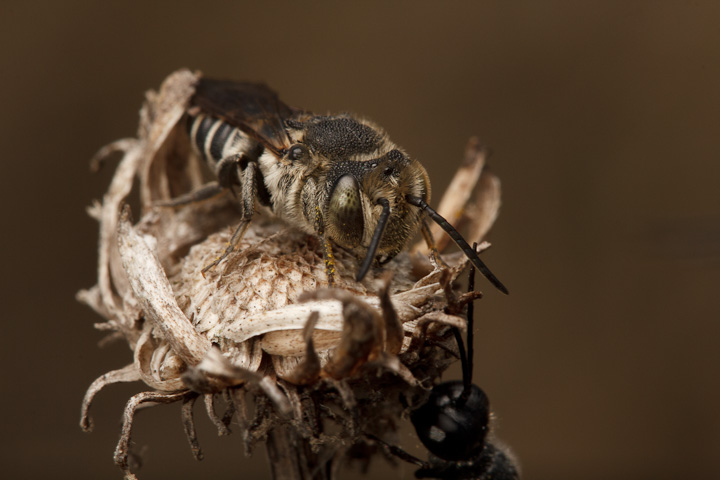
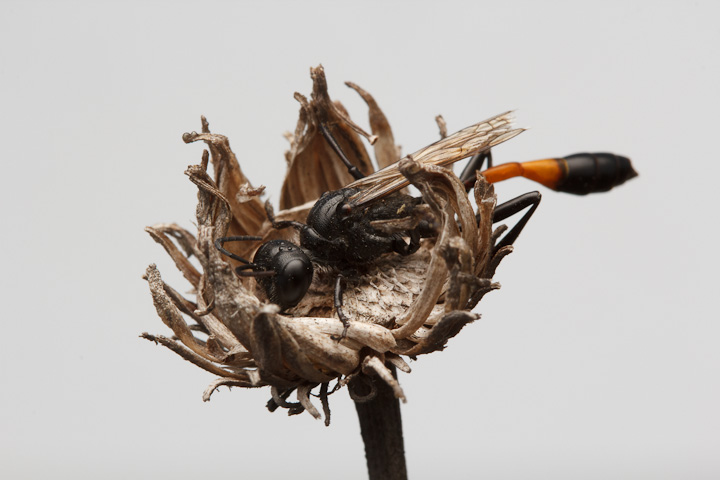
Weekend Expedition 30: A day off in Stanley Park
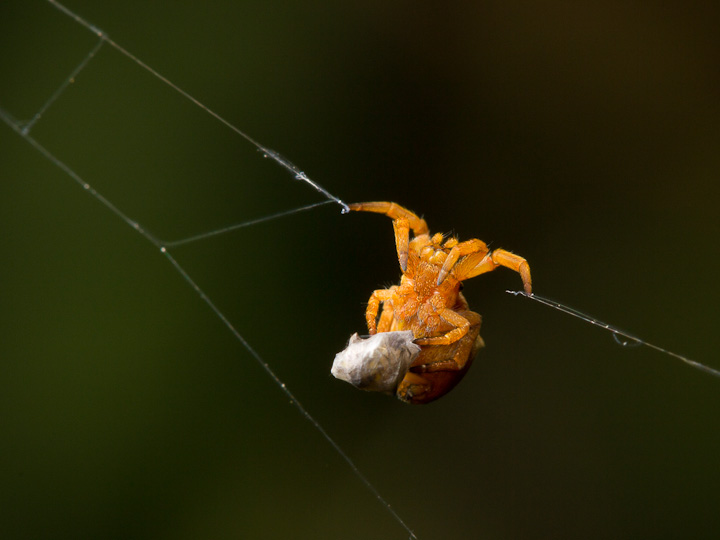
A picture of me, with a sizable prey item, trying to hold it together!
It has been a busy couple weeks here in Vancouver, preparing manuscript revisions for an upcoming paper and writing grant proposals for upcoming fieldwork. They way it is looking now, I may soon be travelling to Honduras in the fall for a 3 week expedition to survey for Red-throated Caracaras and Scarlet Macaws in a remote region of Olancho. This trip will also be to familiarize myself with the terrain, meet the local conservationists and researchers, and get rolling on some permitting issues pertaining to future fieldwork. This is an exciting development for species and habitat conservation, as well as for my harebrained scheme to continue research on my favourite loud birds!
Anyway, with all the excitement, it has been tough to find time to go out to shoot, but that is exactly what I did yesterday, hanging out in Stanley Park, and seeing what the late summer had to offer.

At first, I thought this fly was a member of the Orthorrhapha, the group including horseflies, but Morgan Jackson of Biodiversity in Focus correctly ID’ed it as a Tachinid! Don’t believe me? Check out the closeup of the antennae! The species is Euthera setifacies, one of only two species of Euthera in North America.
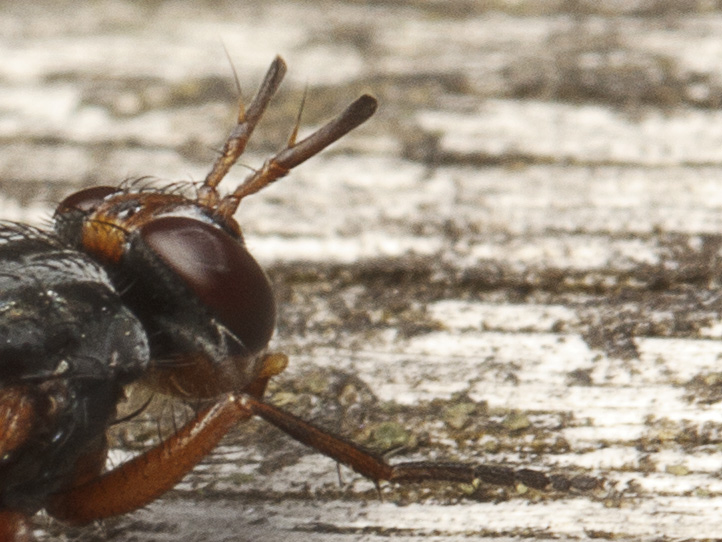
That’s a Cyclorhaphan, man! Those antennae are aristate!

The Himalayan Blackberry is still being visited by pollinators, but the vast majority of the fruit is ripe.

The ripe blackberry is under heavy attack by Drosophila suzukii, an invasive species of vinegar fly from Japan. This is male shows why the species goes by the common name “Spotted-winged Drosophila”.

This male Common Aerial Yellowjacket (Dolichovespula arenaria) is also a harbinger of fall. Their colony cycle is almost finished, reproductives are being produced, and within a month or so their nests will decline.
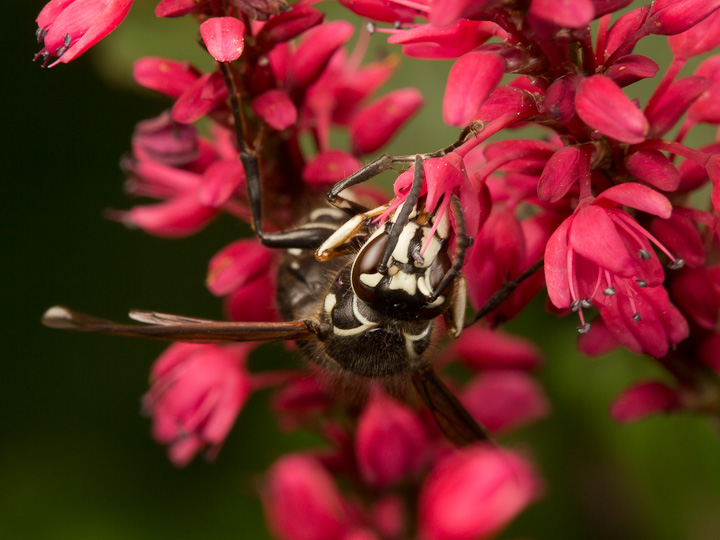
When the Bald-faced Hornets (Dolichovespula maculata) start nectaring, it is also an indication their colonies are in decline. Because much of the sugar for the adults is produced by the larvae (trophallaxis!), when larval numbers are low, adults must find other sources of fuel.

A Sierra Dome Spider, Neriene litigiosa (Linyphiidae) has a snack at the top of her dome web. As fall approaches, these become extremely apparent in almost every salal bush.

Our largest native slug, the Spotted Banana Slug eats some skunk cabbage.

The termites are flying, and their long wings and slow flight make for easy snares for web-building spiders. I like how the green of the fern is reflected in the translucent wings.

A Pacific Forktail (Ischnura cervula) hangs out by the water.

A Black Dancer (Mystacides sepulchralis) a type of Caddisfly, rests near Lost Lagoon.
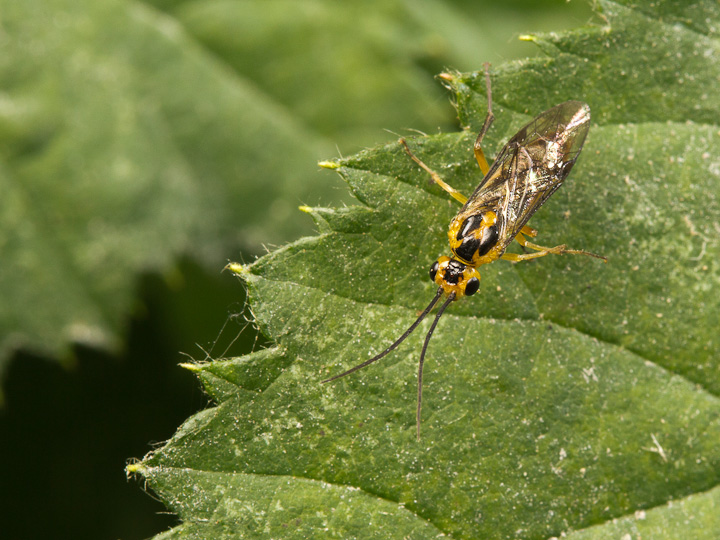
Some kind of Nematus sawfly.
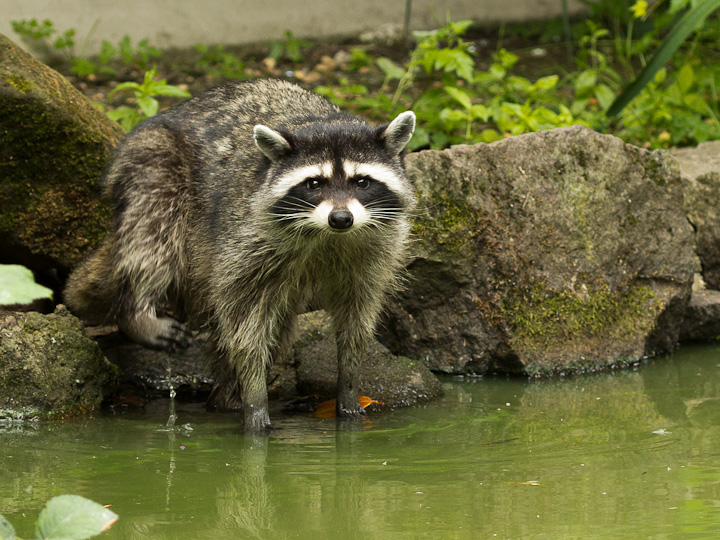
A raccoon checks out the situation before crossing the water.

I love how they hold their tails out!
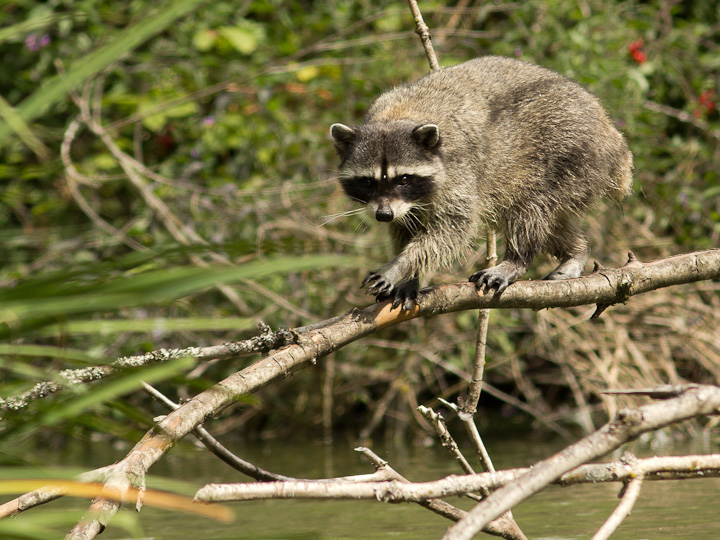
Those without tails make do.


A very late brood Mallard Duckling from water level.
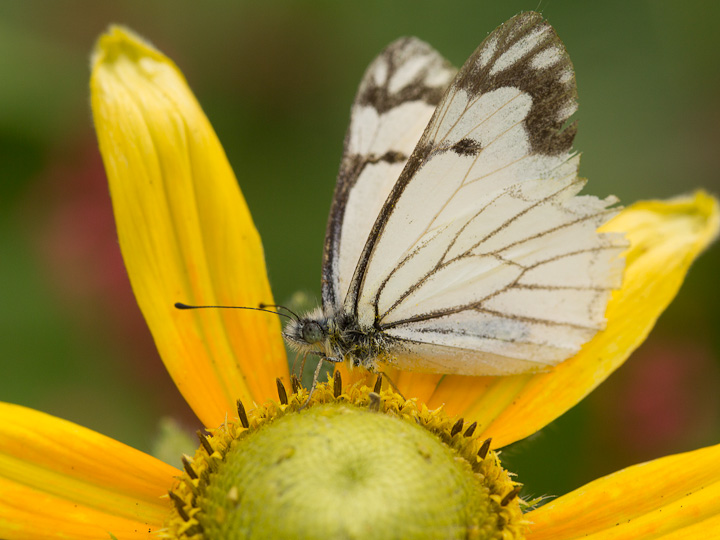
I was excited to see this male Pine White nectaring.

The omnipresent Woodland Skipper (Ochlodes sylvanoides).

Skippers can be pretty cute!
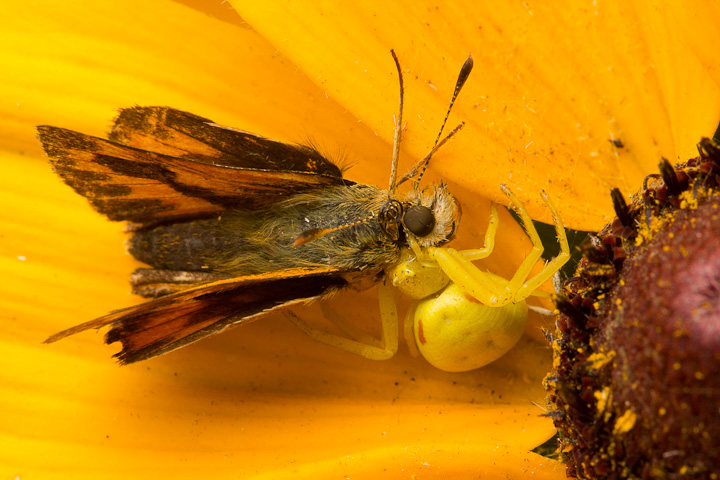
A lucky Goldenrod Crab Spider (Misumena vatia) takes advantage of the skipper abundance.

An introduced Drumming Katydid female (Meconema thalassinum) hangs out on a fern. Check out Piotr Naskrecki’s awesome blog post showing katydids ovipositing!

A colourful background makes this bumblebee pop!
Weekend Expedition 29: life isn’t all slo’ mo’
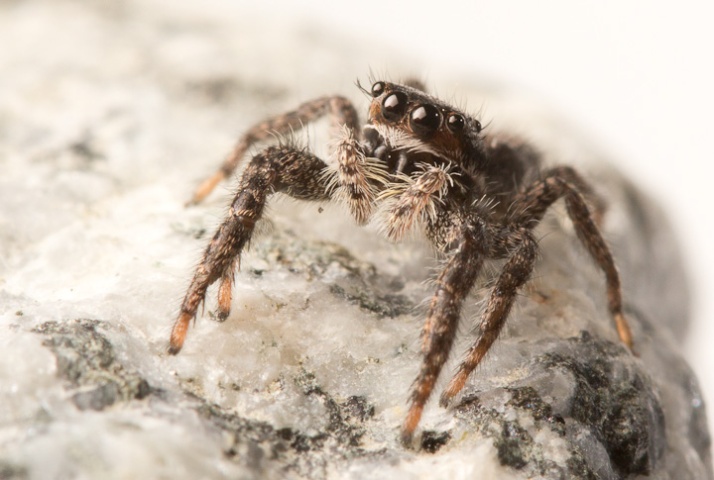
Well, we have been working hard for 9 days with the Photron SA-5, and this weekend was mostly busy as well. I managed to get some time out to take some photos amongst all the high speed madness. Most of these shots were taken during 6 minute downloading breaks with the camera, and I also snuck in a quick trip to the local community garden.

Culiseta incidens, probing my finger.

tanking up!
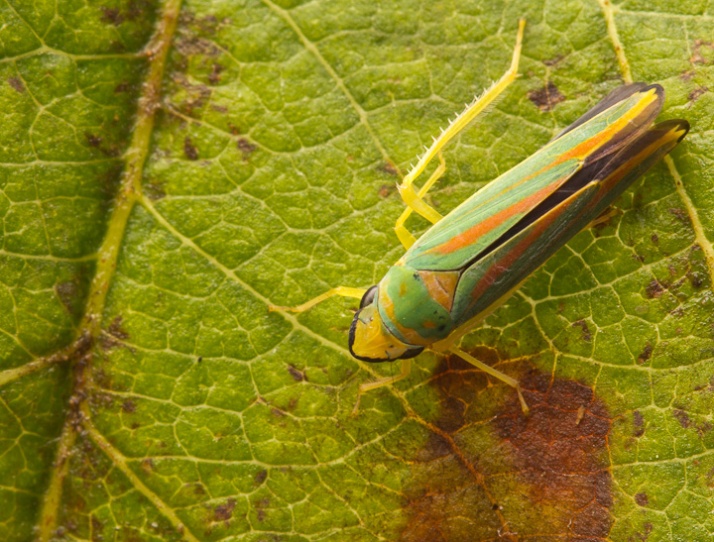
Graphocephala fenahi, the rhododendron leafhopper.
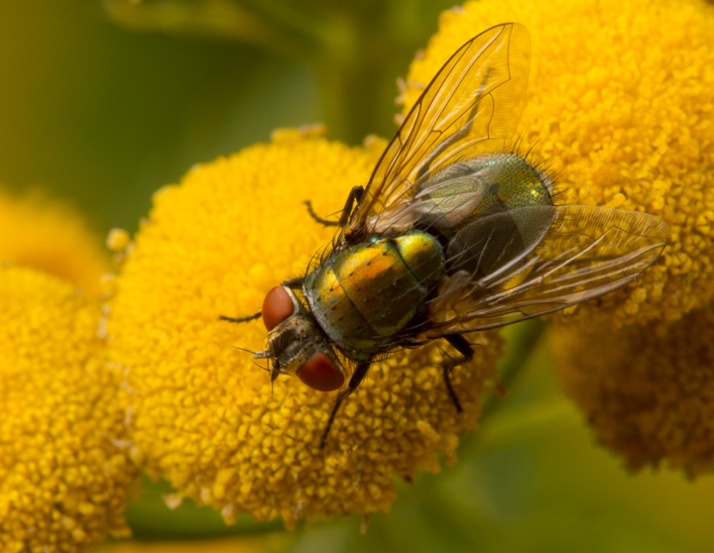
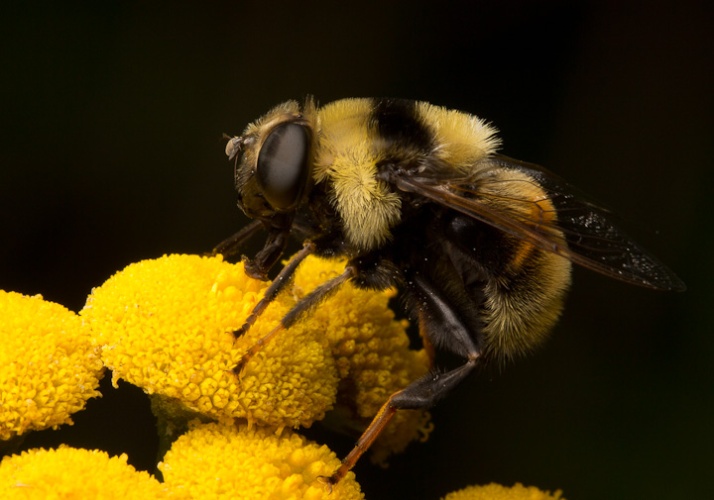
A beautiful syrphid bumblebee mimic, Eristalis flavipes.

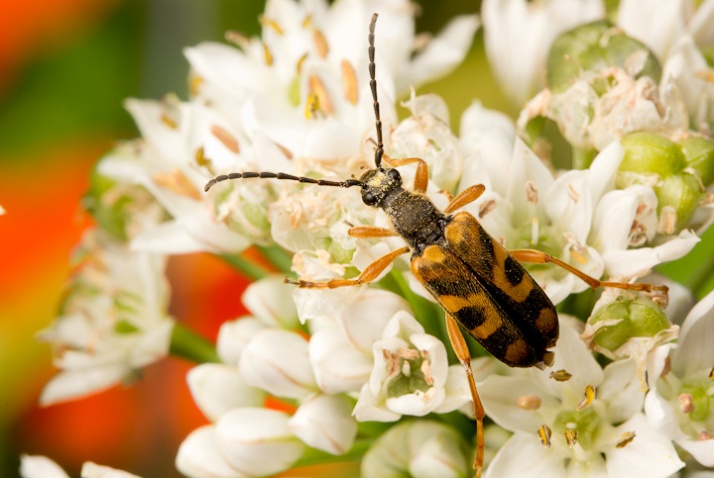
A flower longhorn in the community garden.


A western yellowjacket delves under bark for prey.
OK, you have made it to the end of the photos. Did I ever mention that I am part American? The following 2 videos were shot at a whopping 10,000 frames per second.
Weekend Expedition 28: Nature outing with Hastings Park Conservancy
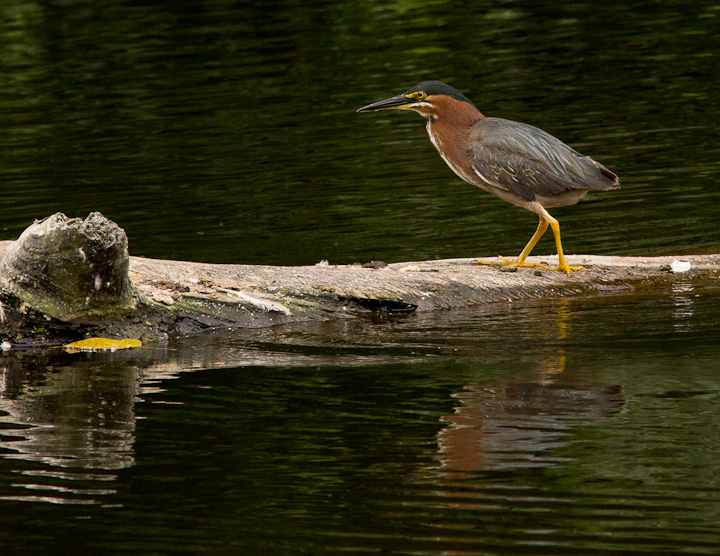
This Weekend, I joined local naturalist Istvan Orosi and members of the Hastings Park Conservancy for a guided walk around the pond at Hastings Park, my local greenspace. While Istvan kept an eye out for birds (he is master of the Audubon Bird Call!) I mainly scanned the foliage for insects and spiders.
This week was big for the Conservancy, as the Vancouver City Council heard arguments for the transfer of governance of the park from the PNE corporation (which is not doing that great a job for the wildlife) to to the Parks Board. The Council will decide the issue in a special session Aug. 1, but I am not really hopeful the governance will change.
In the meantime, here are the pictures I took on Saturday!


An impressive male Tetragnathid, or Long-jawed Orbweaver, which seem common near bodies of water.

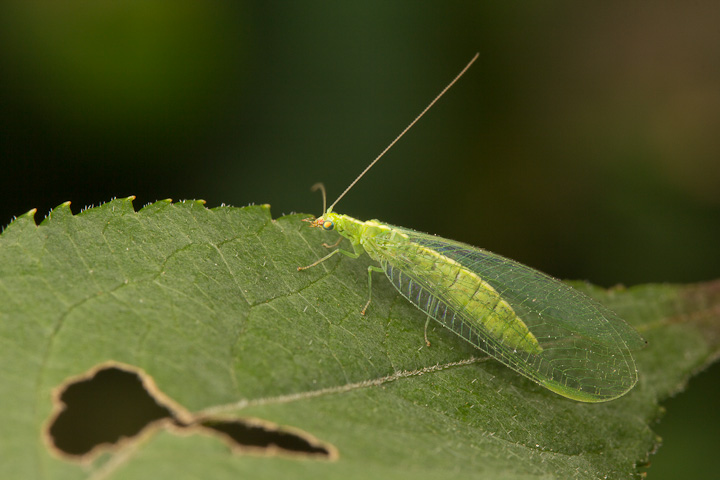
Green Lacewing resting in the shade.

A bird-dropping mimic caterpillar, which I believe is that of a swallowtail butterfly.

We spotted a Golden-rumped Warbler, which was a treat.
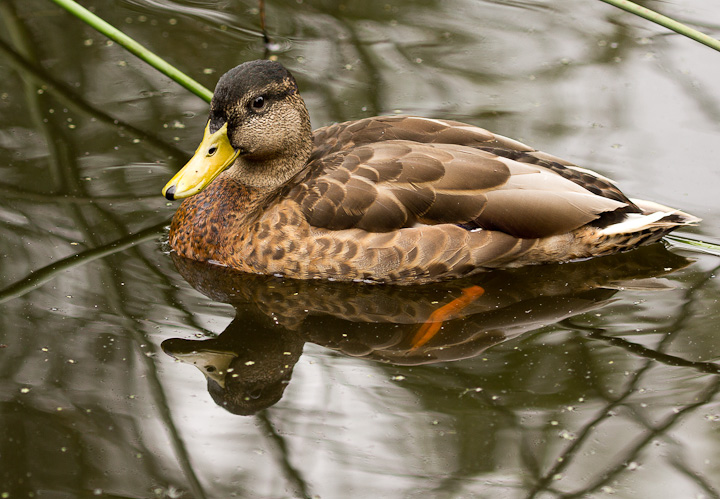

A nice Ichneumonid.
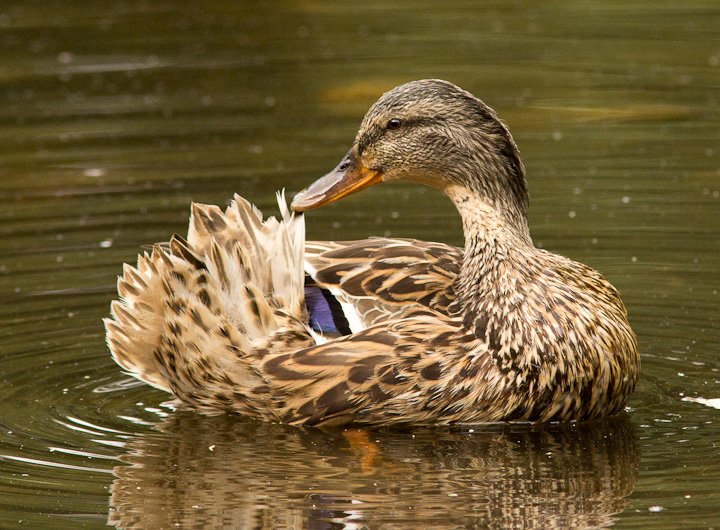


A crazy looking nymph, which I believe to be Heterotoma planicornis, an odd member of the Miridae.
[/caption]

The star of the show, out in the middle of the pond was a Green Heron, a rare bird in the Vancouver region.
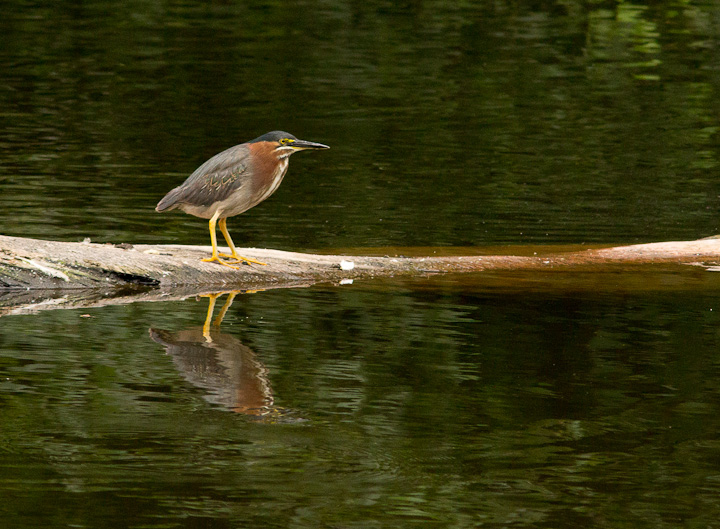
Behold the Green Heron!

Weekend Expedition 27: SFU and the Pandora Community Garden
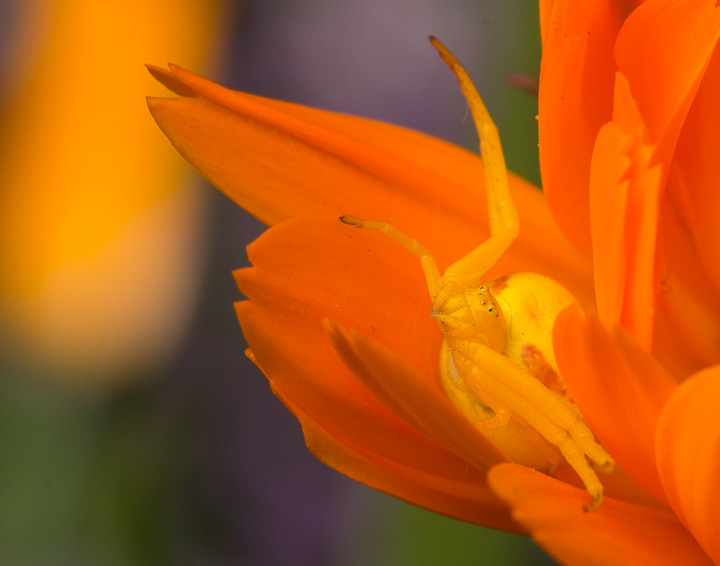
This weekend I have been working on revisions on a paper, so have not had time for a full-fledged expedition, but I spent a couple hours outside the lab at school (Simon Fraser University) on Saturday and Sunday, and some time in the Community Garden at Pandora Park in the evenings. For the time invested, it was not a bad haul of shots!
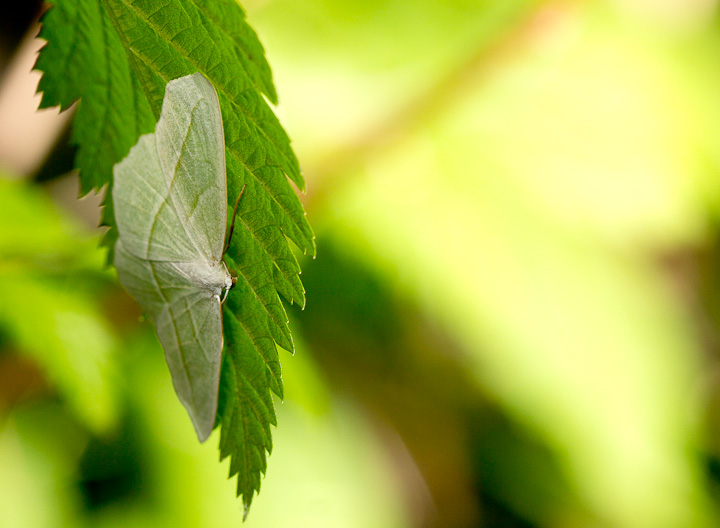
Dis you know that National Moth Week is upon us? This Pale Beauty did! Check back here Thursday for moth shots, as I am organizing a nighttime light trapping at school Wednesday night.

Mounting a second flash in a tree up the trail, I mimicked what a foraging bird might cue in on when examining sun-struck foliage.

Once he landed, this fly was very cooperative for photography! I didn’t notice his Nematoceran buddy til later though.

Here I am trying to make millipedes look good.
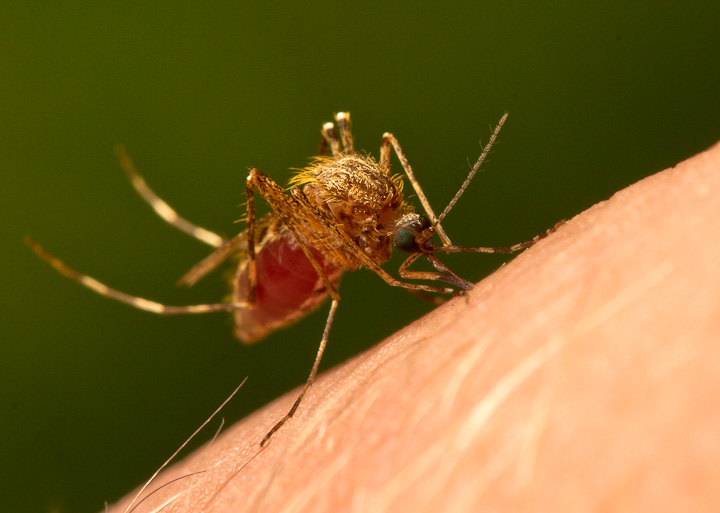
A Coquillettidia perturbans feeds on my arm. This species has larvae with a blade-like siphon that they pierce plant tissue with in order to breathe. They never have to come to the surface.
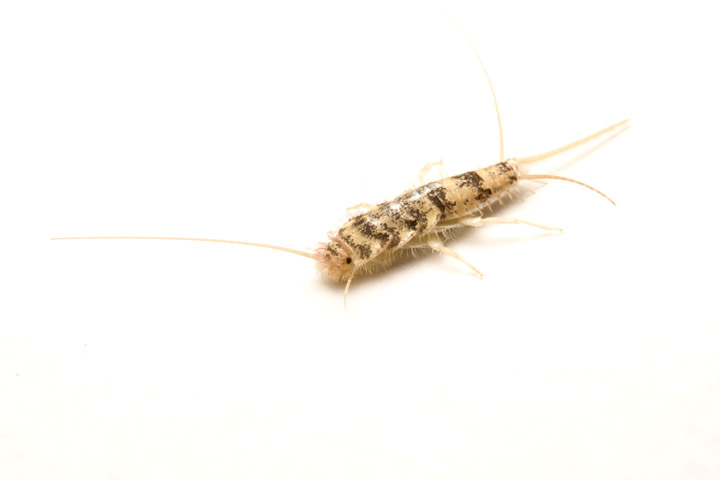
Found this firebrat (Thermobia domestica) in a basement hallway at SFU. They must have been on my mind, as my friend Nathan Woodbury just defended his PhD last week describing how these guys use symbiotic bacteria and fungi as site cues for resting spots.

A male Polistes dominula found at the community garden. I should revise my post about in situ on white, because I find when I push the whites using levels in Photoshop, I get a cleaner result than in ACR…

Polistes dominula and thrips. What a size difference!
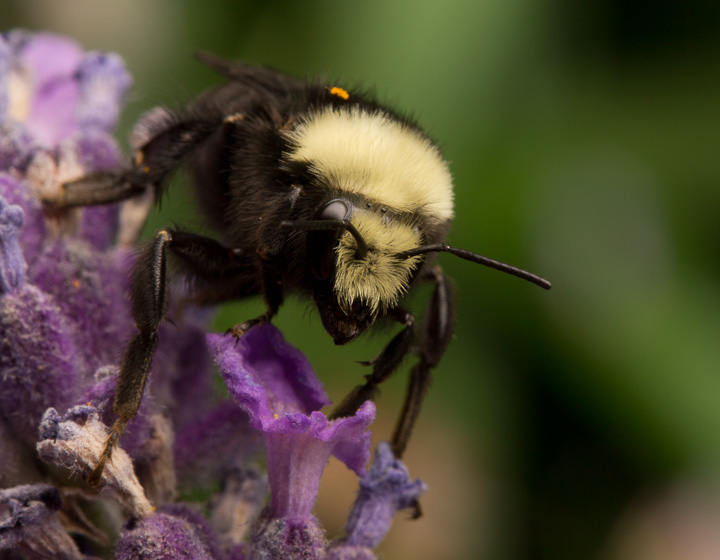
Bombus vosnesenskii on lavender. They really are an elegant bee.
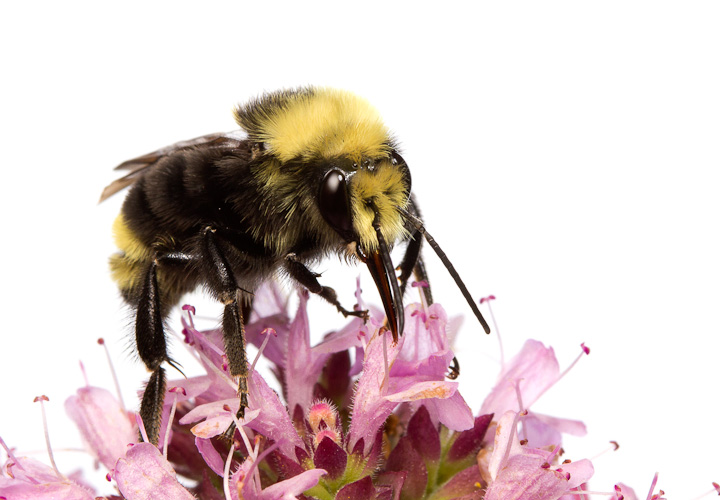


I put the Polistes on an Echinacea. I think he liked it.
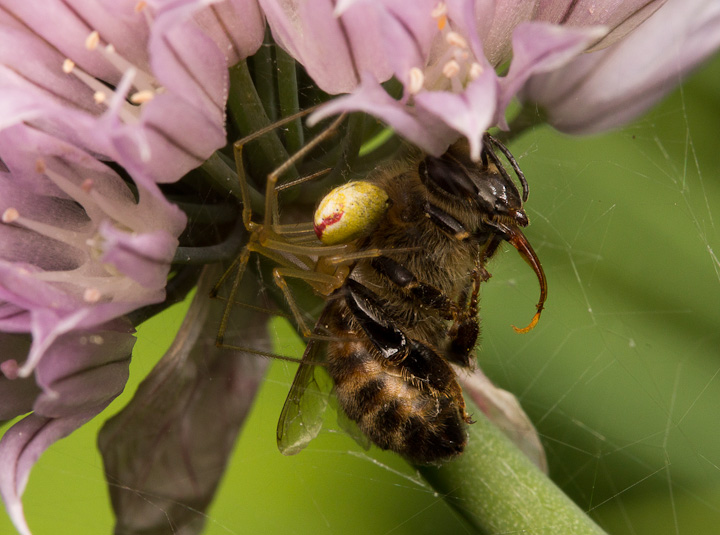
At the SFU comminity gardens, a honeybee learns the perils of pollination.
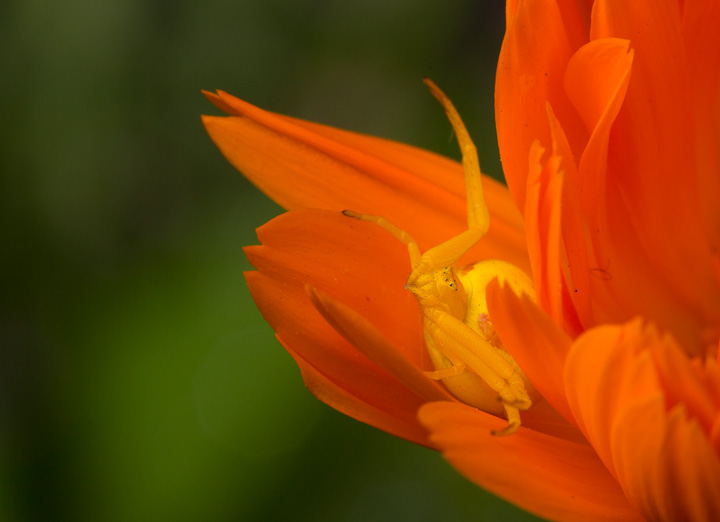
This is one of the major perils, and so pretty! The Goldenrod Crab Spider lies in wait, and seems to blend in with its surroundings.

A Snipe Fly (Rhagionidae likely in the genus Rhagio) in the clutches of death.

Will this hoverfly learn? No one can say. This pullback shot was possible thanks to the Monster Macro Rig; see the next picture for details.

This is a configuration you can use for pullback shots using the Monster Macro Rig. Notice that the camera body is pulled way back on the Arca rail, and the magic arms are somewhat extended forward. It can go even further than that, but mostly I use it close in. Photo by Mike Hrabar, who captured a wicked shot of the Crab Spider and Snipe Fly encounter.
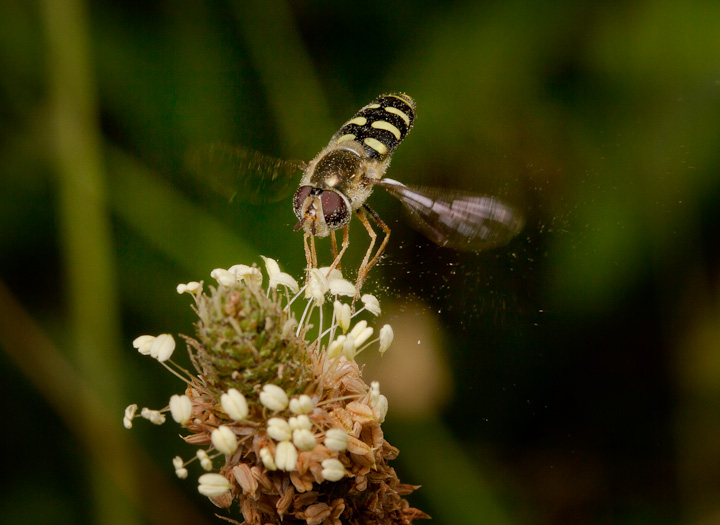
Speaking of hoverflies, what I love about this shot is how the vortices from the landing fly kick up the pollen.

Honeybee, looking elegant on Echinacea.

The Weekend Expedition ended with this lovely Brown Lacewing on a daisy neat the Pandora Park Community Garden.
Weekend Expedition 26: Biking out to Iona

Trying my hand at bike-borne photography, this is my shot of a jet coming in to YVR. Note the Guaranteed Terrorist Proof® Fence!
This weekend Expedition, my dad and I paid a visit to Iona Beach, a place that has been very productive in the past. We took our bikes out there, the better to enjoy the scorching sun and cloudless skies…
Like many hot and dry days, this trip was not as productive as it might have been, with many critters deep in shelter, and those that remain active remaining VERY active. Nonetheless, we did turn up a few cool animals, and I hope you enjoy the pics!
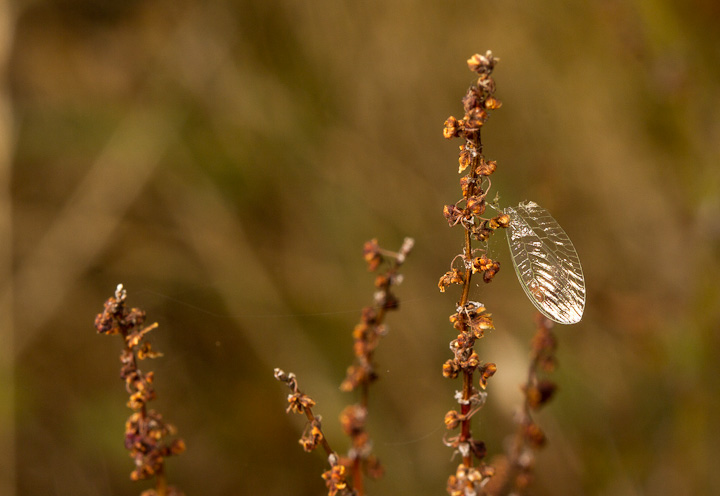
The unhappy remains of a green lacewing?

This little garter snake was under a log near the beach.

A Philanthus gibbosus beewolf, so called because they feed their young bees.

A Damsel Bug (Nabidae) haunts the under-log world.

There were few jumpers evident this time, which was a bit of a disappointment, but I did find this one female Habronattus.

A Hobo Spider (Tegenaria agrestis) is actually a pretty elegant looking thing!
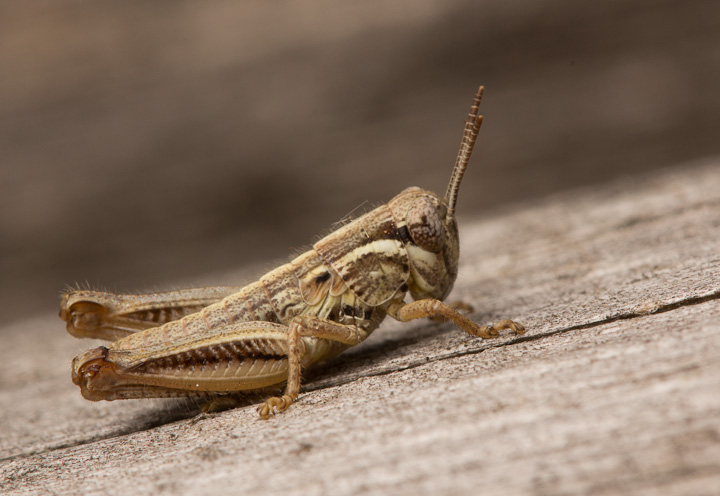
There were many nymphal grasshoppers around, or as I like to call them, spider food!

A female Wolf Spider with a nest and an egg sac!
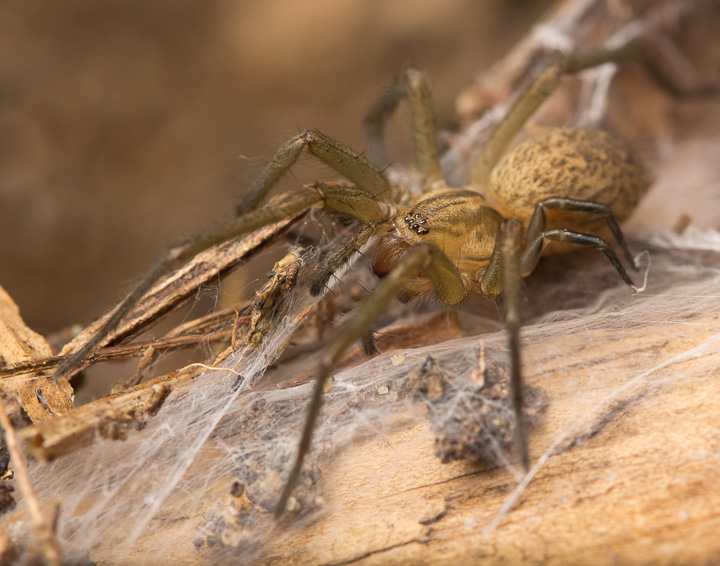
Check out the markings on this Hobo!

The dreaded Dysdera crocata, or Woodlouse Hinter.

A tentful of caterpillars on alder.

I wish I knew my grasshopper well enough to even say what genus this is in…


The buttonflowers can be productive for Hymenoptera.

Bembix Sand Wasp. Check out its crazy labrum!
All in all, the Expedition was not terribly fruitful. In the future I need to get out closer to dawn so as to take advantage of the less-active insects and better light…I made up for it Sunday with a bit of grant-writing at home and some prep for Cheapskate Tuesday.
Weekend Expedition 25: a few from Stanley Park

Some Eudioctria Robber Flies getting it on!
Photography seems to run in my family, with my Dad shooting lots of people and landscapes, and my brother doing lots of aviation and travel shooting.
My Dad was visiting this weekend from Romania, and so I thought I would take him out to find some cool stuff in Stanley Park. Now is a great time for fledgling birds, and all the summer specialties such as robber flies are abundant.

A mother Wood Duck watches her brood.
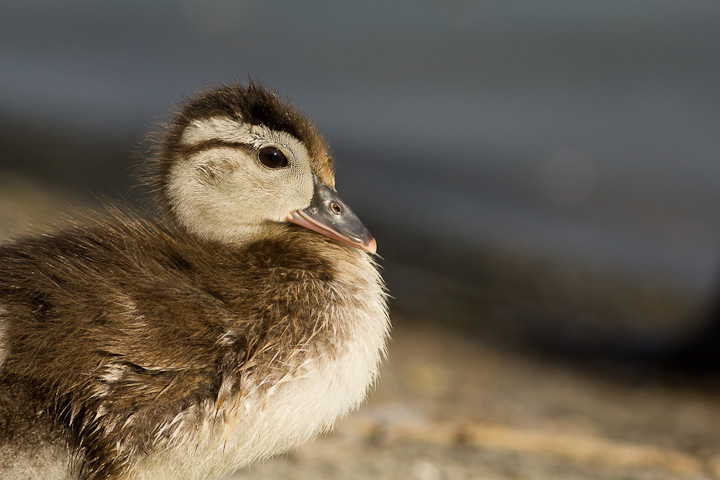
Wood Duckling!

Fledgling Great Blue Heron, trying to fish.

Young Canada Goose, looking serious.

Crows were foraging in the intertidal of English Bay.
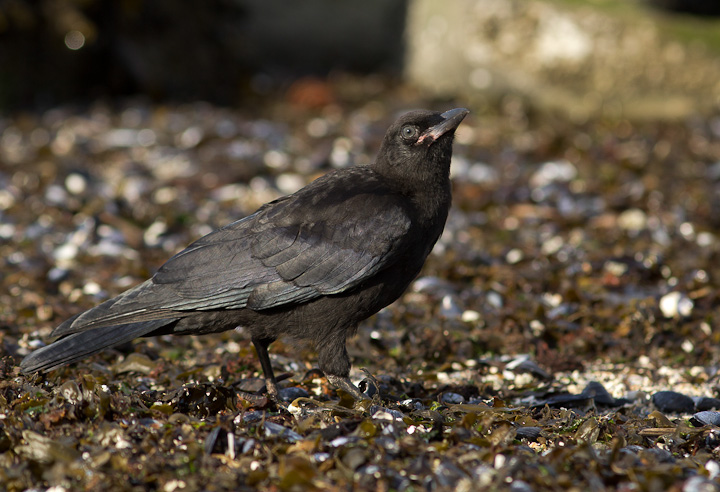
A fledgling crow learns how to get mollusks on the beach.

My dad takes a break while I shoot crows.
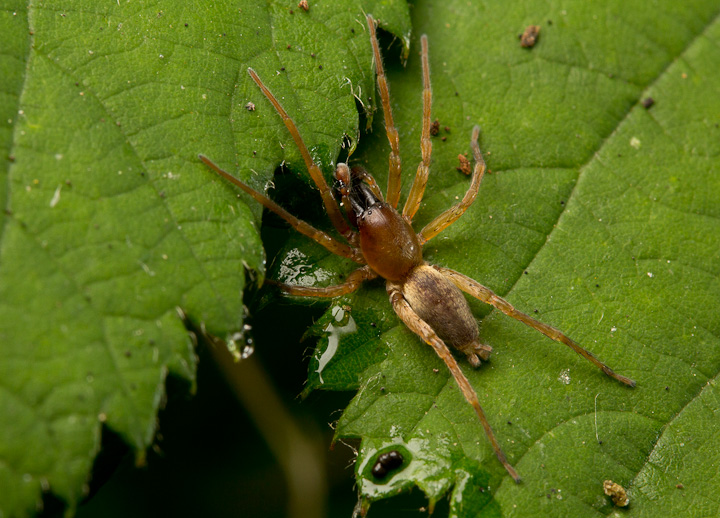
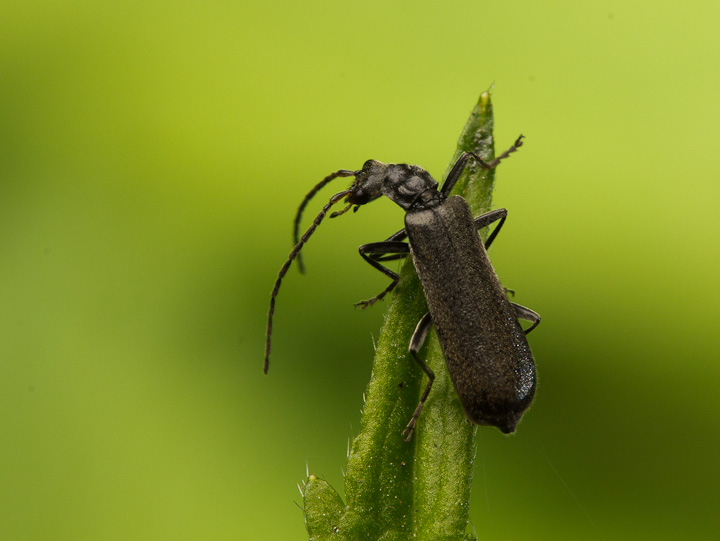
Soldier Beetle tosses antennae provocatively.


A monster!

Lacewing larvae are pretty fascinating.

The Eudioctria were a bit randy today.

And hungry! Here is one with a barklouse as prey.

Strategic wing placement?
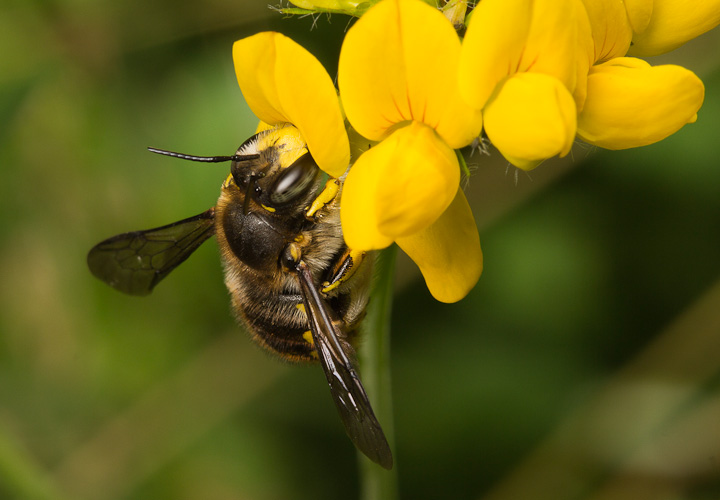
This Anthidium manicatum was fixated on these flowers. For an introduced species, these are pretty nice looking insects.
